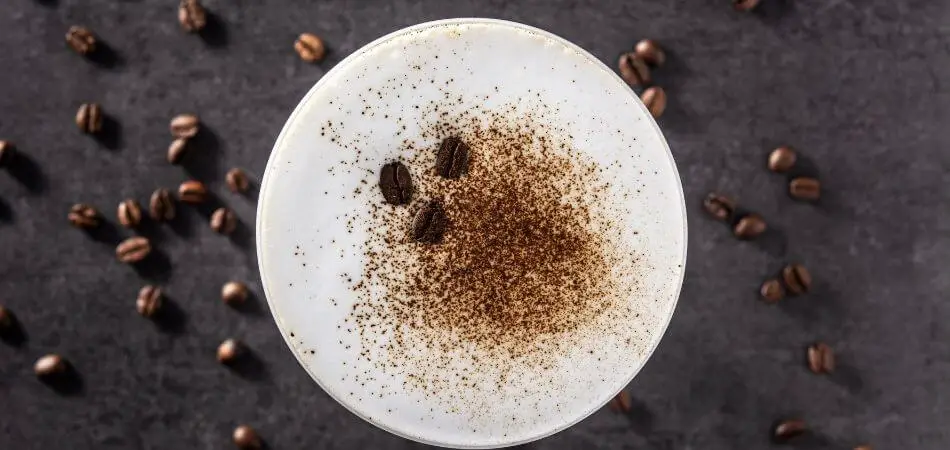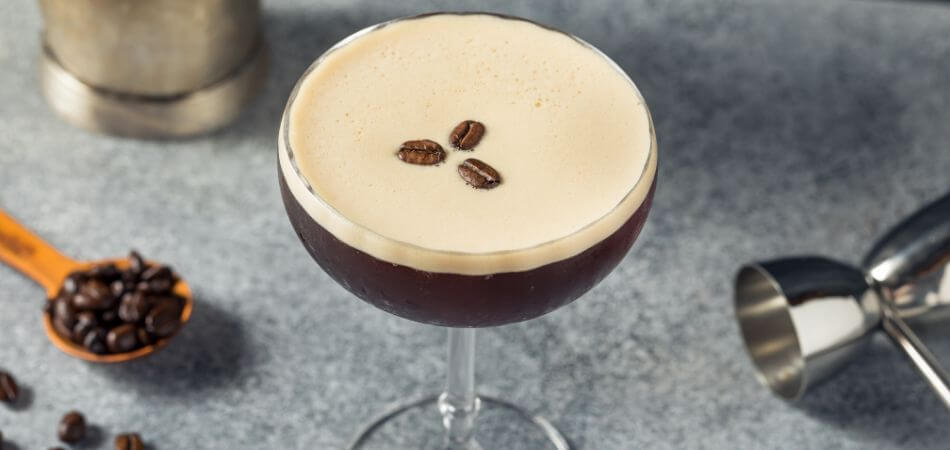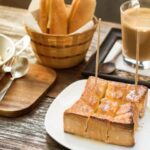How to Make the Perfect Espresso Martini: A Step-by-Step Recipe
Picture this: You’ve just finished a delicious dinner, and now you’re craving something sweet, bold, and a little buzzy. Enter the Espresso Martini—a velvety, coffee-infused cocktail that’s equal parts energizing and indulgent.
This iconic drink isn’t just a cocktail; it’s an experience. With its rich espresso flavor, smooth vodka kick, and that luxurious foamy top, it’s no wonder the Espresso Martini has become a modern classic. Whether you’re hosting a dinner party, winding down after a long day, or simply treating yourself, this drink delivers caffeinated cocktail bliss.
But where did it come from? Legend has it that in the 1980s, a famous supermodel (some say Kate Moss) walked into a London bar and asked bartender Dick Bradsell for a drink that would “wake me up and mess me up.” The result? The Vodka Espresso, later renamed the Espresso Martini.
In this guide, you’ll learn:
✅ The exact ingredients for the perfect balance of flavors
✅ Step-by-step instructions (with pro tips for that signature foam)
✅ Creative variations (dairy-free, flavored twists, and more)
✅ Common mistakes to avoid (so yours turns out flawless every time)
Ready to shake up the best Espresso Martini of your life? Let’s dive in.

What is an Espresso Martini?
An Espresso Martini is a cold, coffee-flavored cocktail made with:
- Vodka (for a clean, strong base)
- Freshly brewed espresso (the star of the show)
- Coffee liqueur (like Kahlúa, for sweetness and depth)
- Simple syrup (to balance the bitterness)
Why You’ll Love It
✔ Smooth & Creamy – The shaking process creates a frothy layer that feels luxurious.
✔ Bold Coffee Flavor – Unlike sugary coffee cocktails, this one highlights real espresso.
✔ Versatile – Serve it as an after-dinner drink, a brunch cocktail, or a party showstopper.
A Brief History
The Espresso Martini was born in London’s Soho in the 1980s, during the cocktail renaissance. Bartender Dick Bradsell crafted it for a model who wanted something energizing yet boozy—and the rest is history. Originally called the “Vodka Espresso,” it was later renamed to capitalize on the martini craze.
Fun Fact: The classic garnish of three coffee beans symbolizes health, wealth, and happiness—an Italian tradition!
Ingredients & Equipment You’ll Need
Essential Ingredients
| Ingredient | Why It Matters | Best Choices |
|---|---|---|
| Vodka (2 oz) | Provides a neutral, clean alcohol base | Tito’s, Grey Goose, Ketel One |
| Espresso (1 oz) | The soul of the drink—must be fresh! | Freshly brewed, or strong cold brew |
| Coffee Liqueur (½ oz) | Adds sweetness & depth | Kahlúa, Mr. Black, Borghetti |
| Simple Syrup (½ oz) | Balances bitterness | Homemade (1:1 sugar-water) or maple syrup |
Optional Upgrades
- Vanilla vodka (for a sweeter twist)
- Chocolate bitters (adds a mocha note)
- Oat milk foam (dairy-free alternative)
Must-Have Equipment
✔ Cocktail shaker (or a mason jar in a pinch)
✔ Fine strainer (for a silky texture)
✔ Chilled martini glass (keeps the drink cold)
✔ Jigger (for precise measurements)
Pro Tip: Always use freshly brewed espresso—stale coffee ruins the flavor!

Step-by-Step Espresso Martini Recipe
Step 1: Chill Your Glass
- Fill a martini glass with ice water or place it in the freezer for 5 minutes.
- Why? A cold glass keeps the drink crisp and refreshing.
Step 2: Brew & Cool Espresso
- Pull 1 oz of fresh espresso (or use strong cold brew concentrate).
- Let it cool slightly (hot espresso melts the ice too fast).
Step 3: Shake It Up!
- In a shaker, combine:
- 2 oz vodka
- 1 oz espresso
- ½ oz coffee liqueur
- ½ oz simple syrup
- Add ice (fill ¾ of the shaker).
- Shake hard for 15-20 seconds—this creates the foamy crema.
Step 4: Strain & Serve
- Double-strain into the chilled glass (to catch ice chips).
- Garnish with 3 espresso beans (for luck and aesthetics).
Pro Tip: If your foam isn’t thick enough, try adding a tiny bit of aquafaba (chickpea water) before shaking!
Pro Tips & Common Mistakes
How to Make It Perfect Every Time
✅ Use fresh espresso (instant coffee won’t give the same depth).
✅ Shake vigorously—the harder, the foamier.
✅ Adjust sweetness (add more syrup if you like it sweeter).
Mistakes to Avoid
❌ Using hot espresso (melts the ice, diluting the drink).
❌ Over-shaking (can make it watery).
❌ Skipping the simple syrup (espresso is bitter—balance is key).

Creative Variations to Try
1. Dalgona Espresso Martini
- Top with whipped coffee foam (equal parts instant coffee, sugar, hot water, whipped).
2. Mocha Martini
- Add ½ oz chocolate liqueur or a dash of cocoa powder.
3. Dairy-Free Version
- Swap the foam for oat milk froth (shake with a splash before straining).
4. Decaf Option
- Use decaf espresso for a late-night treat.
FAQs
How can I enhance the taste of my espresso martini?
Improving your espresso martini can be achieved by focusing on the quality of the ingredients, particularly the espresso itself. Using freshly brewed espresso and high-quality vodka can make a significant difference. Additionally, adjusting the sweetness and coffee liqueur according to your taste can also enhance the flavor.
What is the best way to achieve a perfect froth on an espresso martini?
The key to a great froth on an espresso martini lies in the shaking technique. After adding all ingredients into the shaker, tap and swirl the shaker to mix them well. Then, shake vigorously for 20-30 seconds. This process helps the natural oils in the coffee to emulsify with air bubbles, creating a rich and satisfying foam.
Should I use Kahlua or Baileys for an espresso martini?
The choice between Kahlua and Baileys depends on your flavor preference for the espresso martini. Use Kahlua if you prefer a stronger coffee flavor, or Baileys for a creamier texture.
Why is my espresso martini not frothy?
A lack of froth in your espresso martini could be due to the way the espresso is prepared before it’s added to the cocktail shaker. To ensure a creamy texture, froth your espresso well before mixing it into the drink.
Can I make an Espresso Martini without a shaker?
Yes! Use a tightly sealed jar and shake well.
What’s the best vodka for this cocktail?
A smooth, mid-range vodka (like Tito’s or Grey Goose).
Final Thoughts: Shake, Sip, Enjoy!
The Espresso Martini is more than just a drink—it’s a mini dessert, a caffeine boost, and a cocktail masterpiece all in one. Now that you’ve got the perfect recipe, it’s time to impress your friends, treat yourself, or just enjoy a little liquid motivation.
Your Turn!
👉 Try this recipe tonight and tag us with your creations!




